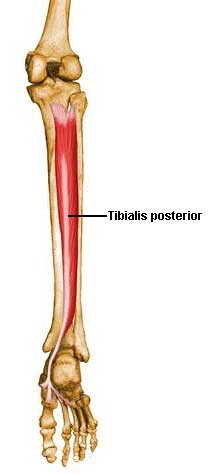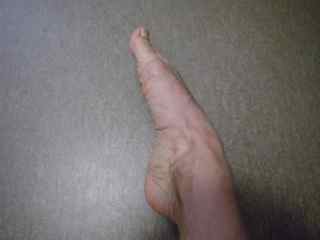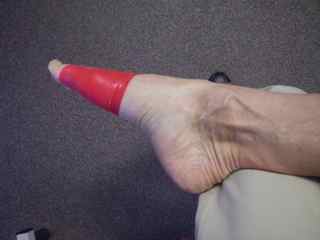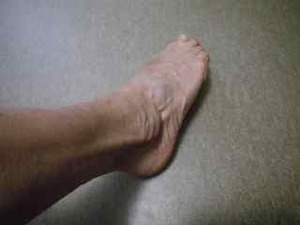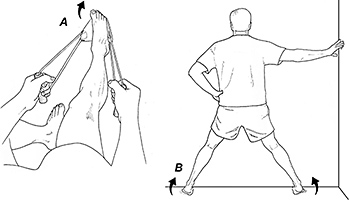Strengthening the Tibialis Posterior and Peroneus Longus
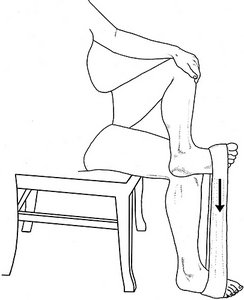 Adapted from Michaud, T.
Adapted from Michaud, T.
1. Foot Adduction Exercise. Tibialis Posterior.
This exercise allows the patient to perform eccentric load exercises by lifting the involved forefoot by hand (to avoid the concentric phase) while using tibialis posterior to actively lower the involved forefoot during the eccentric phase. The eccentric portion of the exercise should last 3 seconds and the patient typically performs three sets of 15 repetitions daily.
This exercise allows the patient to perform eccentric load exercises by lifting the involved forefoot by hand (to avoid the concentric phase) while using tibialis posterior to actively lower the involved forefoot during the eccentric phase. The eccentric portion of the exercise should last 3 seconds and the patient typically performs three sets of 15 repetitions daily.

Using the hand, place the foot into a fully adducted and plantarflexed starting position...

Slowly lower the foot toward the floor in 3 seconds. Repeat. 15 reps, 3 sets, daily.
